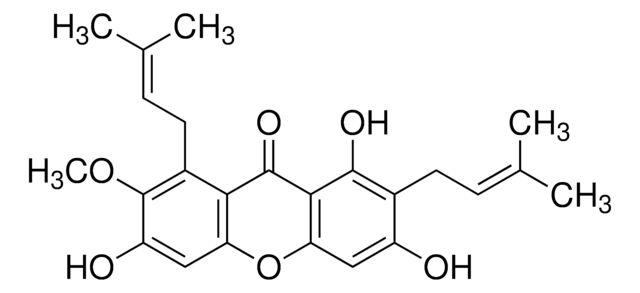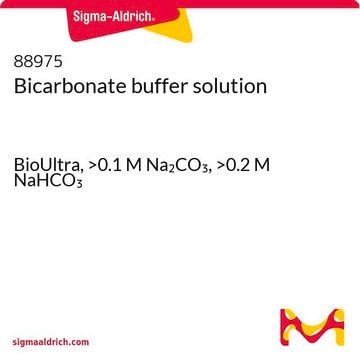D5817
DMXAA
≥98% (HPLC), solid, apoptosis inducer
Synonyme(s) :
5,6-Dimethylxanthenone-4-acetic Acid, ASA404, Vadimezan
About This Item
Produits recommandés
product name
DMXAA, ≥98% (HPLC), solid
Niveau de qualité
Pureté
≥98% (HPLC)
Forme
solid
Couleur
light brown
Solubilité
DMSO: soluble >10 mg/mL
Température de stockage
2-8°C
Chaîne SMILES
Cc1ccc2C(=O)c3cccc(CC(O)=O)c3Oc2c1C
InChI
1S/C17H14O4/c1-9-6-7-13-15(20)12-5-3-4-11(8-14(18)19)17(12)21-16(13)10(9)2/h3-7H,8H2,1-2H3,(H,18,19)
Clé InChI
XGOYIMQSIKSOBS-UHFFFAOYSA-N
Description générale
Application
Actions biochimiques/physiologiques
Caractéristiques et avantages
Mention d'avertissement
Warning
Mentions de danger
Conseils de prudence
Classification des risques
Acute Tox. 4 Oral - Aquatic Acute 1
Code de la classe de stockage
11 - Combustible Solids
Classe de danger pour l'eau (WGK)
WGK 3
Point d'éclair (°F)
Not applicable
Point d'éclair (°C)
Not applicable
Équipement de protection individuelle
dust mask type N95 (US), Eyeshields, Faceshields, Gloves
Certificats d'analyse (COA)
Recherchez un Certificats d'analyse (COA) en saisissant le numéro de lot du produit. Les numéros de lot figurent sur l'étiquette du produit après les mots "Lot" ou "Batch".
Déjà en possession de ce produit ?
Retrouvez la documentation relative aux produits que vous avez récemment achetés dans la Bibliothèque de documents.
Les clients ont également consulté
Articles
Cell cycle phases (G1, S, G2, M) regulate cell growth, DNA replication, and division in proliferating cells.
Apoptosis regulation involves multiple pathways and molecules for cellular homeostasis.
Notre équipe de scientifiques dispose d'une expérience dans tous les secteurs de la recherche, notamment en sciences de la vie, science des matériaux, synthèse chimique, chromatographie, analyse et dans de nombreux autres domaines..
Contacter notre Service technique
















